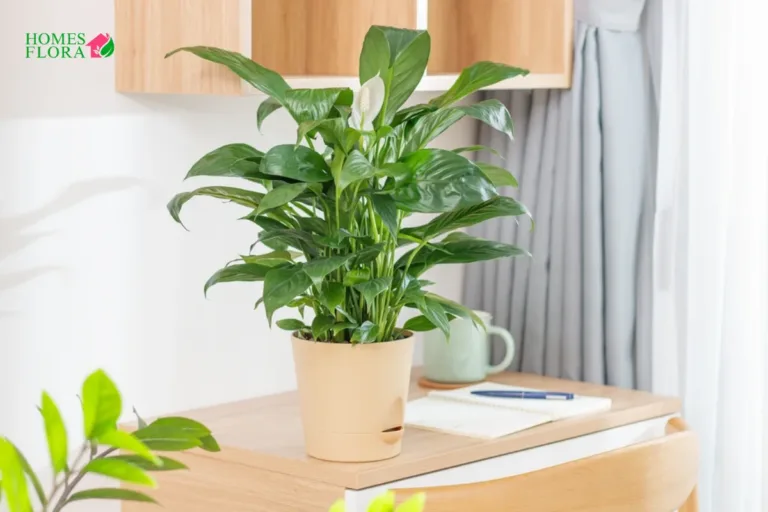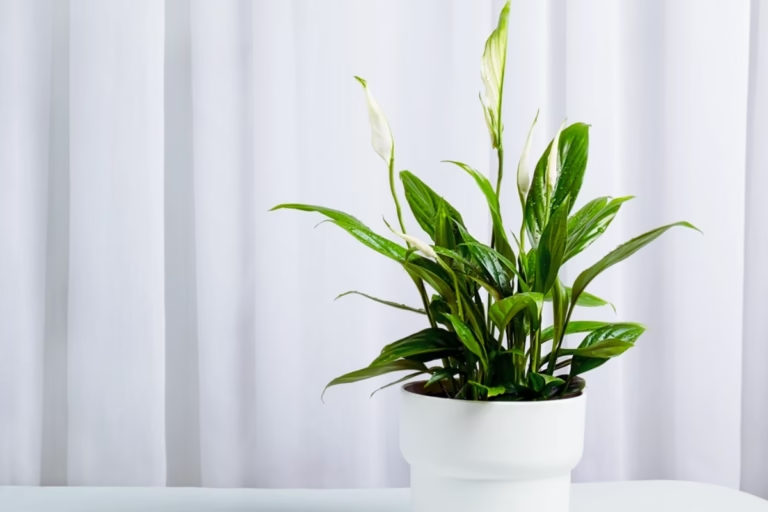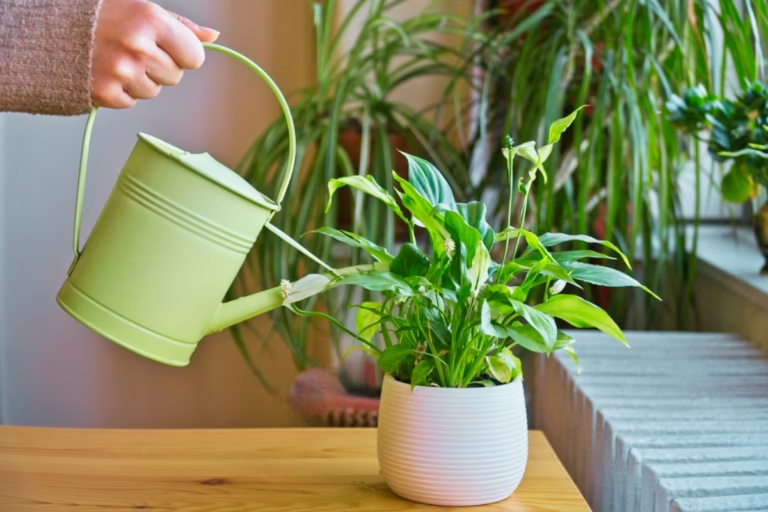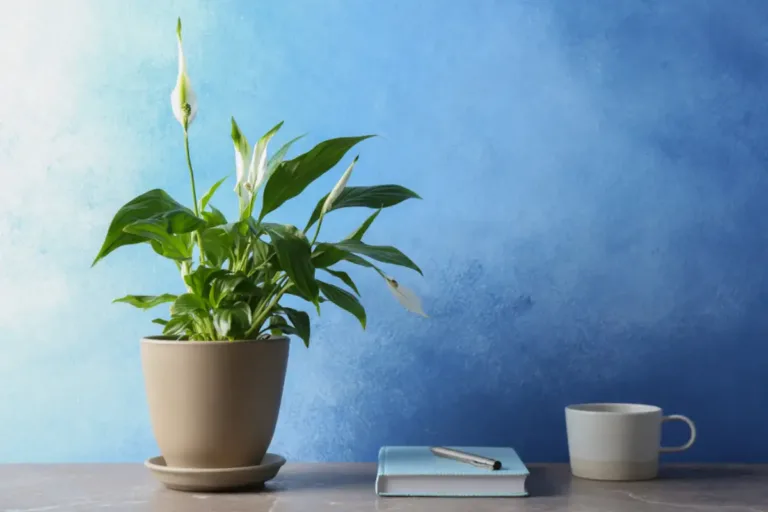Peace Lily Flower: Stages, Frequency, Problems, Care Tips
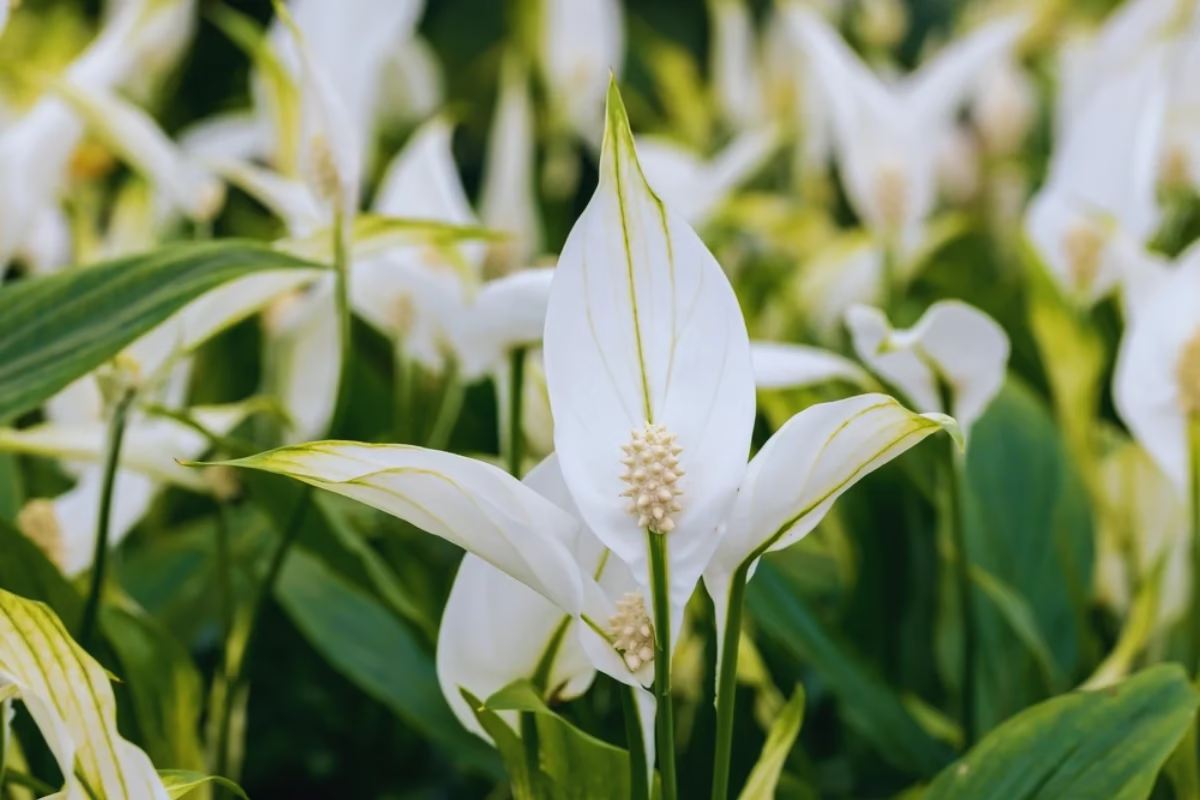
Have you ever paused to admire a Peace Lily flower, only to wish it bloomed more often? Or maybe you’ve wondered why your Peace Lily plant flowers vanished for months and then returned like a tiny white miracle. All these happens with houseplant lovers.
Knowing exactly how a Peace Lily goes from lush green leaves to its graceful creamy white spathes will help you unlock more blooms all year round. And the best part? It’s not rocket science —Just a few changes in light, soil, humidity, and watering routine can turn your non-flowering Spathiphyllum into a blooming one.
Why a Blooming Peace Lily Feels So Special
The Peace Lily (Spathiphyllum) is a low-light, air-purifying houseplant native to Central and South America, admired for its lush green leaves and striking white spathes. It’s treasured for its elegant flowers — which aren’t technically flowers in the usual sense. That striking white “petal” is a spathe, a modified leaf that protects the tiny cluster of real blooms on the spike, called the spadix.
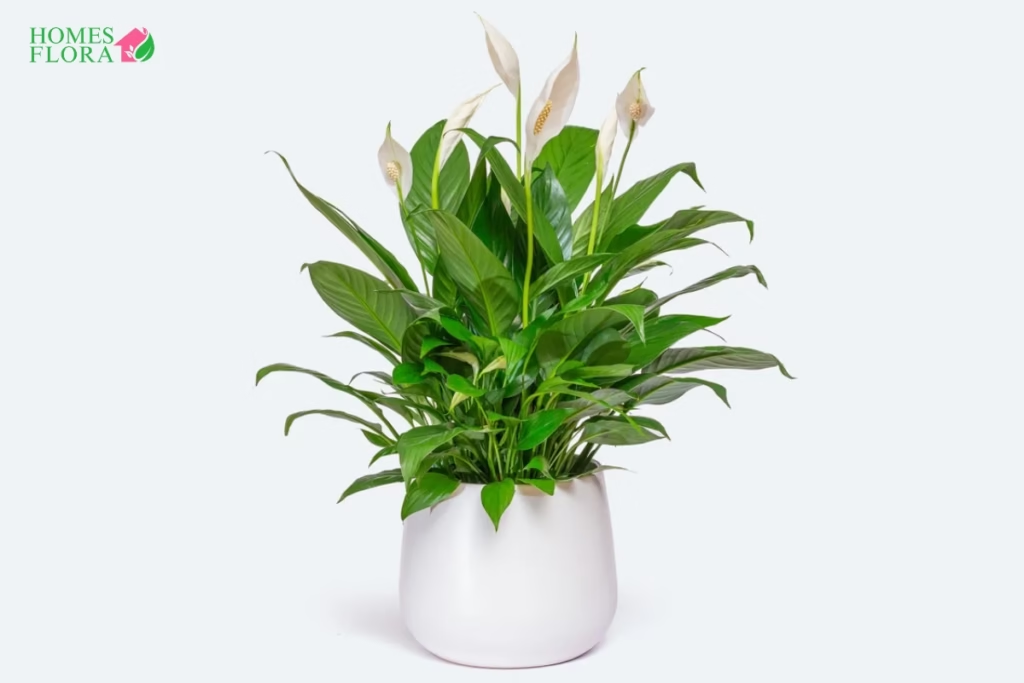
A flowering Peace Lily (Spathiphyllum) is more than just a plant — it’s a symbol of renewal, healing, and inner peace. While its deep green leaves purify the air, it’s the emergence of elegant white spathes that brings a unique emotional shift to any space. These graceful blooms surround the spadix, quietly marking balance, hope, and tranquility.
4 Peace Lily Flowering Stages
Let’s break down the stages, so you know exactly what’s happening behind those glossy green leaves.
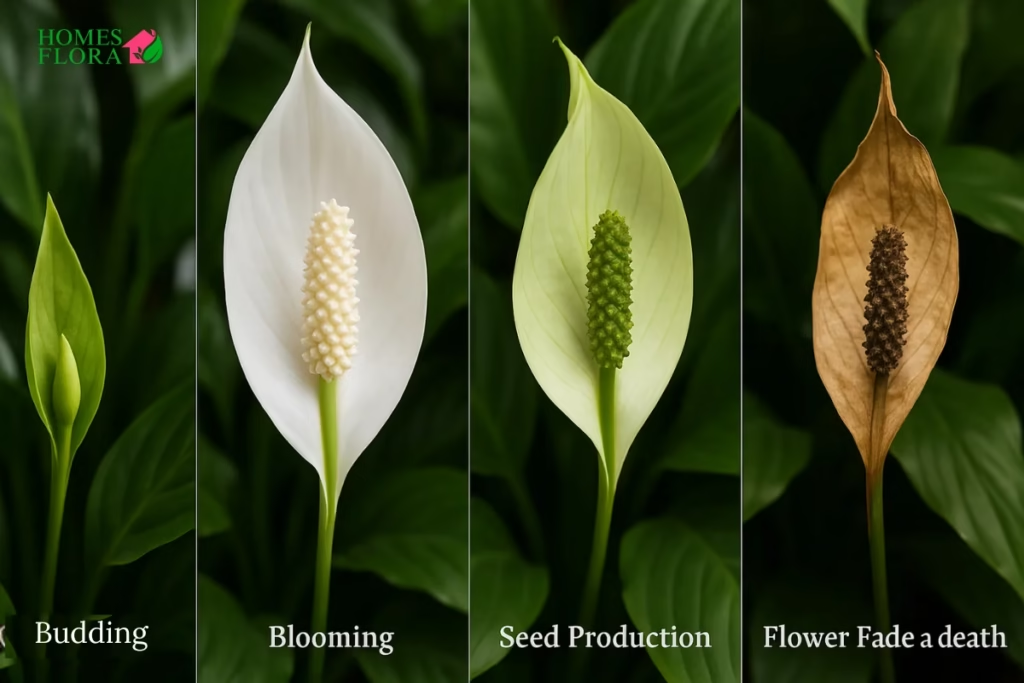
Budding
The first sign of a new bloom is a small green nub that looks just like a new leaf. This bud grows hidden among the bigger leaves — you might miss it at first. Inside, the spadix (the spike) is forming and the spathe is wrapping around it for protection.
Tip: Healthy new buds mean your plant’s conditions are right — keep up the good work.
Blooming
Next comes the magic moment — the spathe unfurls, showing off that creamy white “flower.” This elegant hood frames the spadix, which holds dozens of tiny blossoms packed tight together. A healthy spathe stays white for weeks. During this time, your Peace Lily looks its best — the classic look every plant lover wants.
Seed Production
If pollinated (rare indoors), those tiny flowers can make seeds. The spadix might turn a darker color, and the spathe can fade from white to green or yellow. However, most people remove faded flowers before seeds form. Why? Because seed production drains energy your plant could spend growing new leaves — or another bloom.
Flower Fade and Death
Eventually, the show ends. The spathe wilts, turns brown, and dries out. This is normal — every bloom has its time. Snip off dying flowers near the base so your Peace Lily stays tidy and puts energy into fresh growth.
why my peace lily doesn’t flower
If your Peace Lily isn’t flowering, it could be due to insufficient light, improper watering, or nutrient deficiencies, especially low potassium. Some varieties bloom less frequently, and if it’s off-season, flowering may pause.
Also, low humidity, cold temperatures, or lack of fertilization can impact bloom development. Understanding your Spathiphyllum’s specific needs and adjusting its environmental conditions can restore its natural flowering cycle.
how to make peace lily flower more often
A lot of people wonder, “How do I get my Peace Lily to flower again?” The secret is simple: mimic its natural rainforest home.
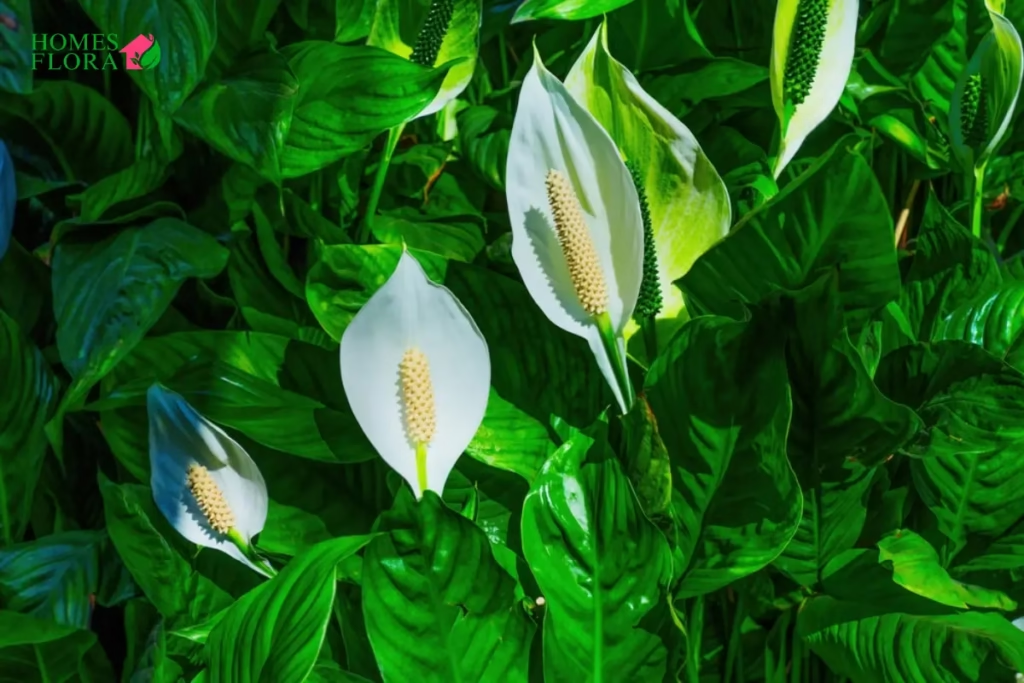
Optimal Lighting
Peace Lilies need bright, indirect sunlight to bloom. Avoid direct sunlight to prevent scorched leaves, and place them near a north or east-facing window for ideal filtered light. If natural light is low, use a grow light to support healthy blooming.
Proper Watering
Overwatering or underwatering your Peace Lily can cause stress and reduce blooming. Keep moist soil—never soggy—and water when the top inch of soil dries. Use lukewarm water and always drain excess water from the saucer to prevent root rot.
Fertilising Routine
Peace lilies benefit from a balanced, water-soluble fertiliser to support healthy growth and blooming. Feed every 6–8 weeks during the growing season (spring and summer) using a 20-20-20 fertiliser at half strength, following package instructions to avoid over-fertilising.
Ideal Temp & Humidity
Peace lilies flourish in temperatures of 65–85°F (18–30°C) and humidity levels between 40–60%. Keep them away from air vents, draughty windows, and heat sources. Use a humidifier, pebble tray, or mist regularly with a spray bottle to maintain ideal humidity.
Dead Leaf Removal
Removing yellow or dead leaves helps your peace lily grow and bloom better. Wiping the leaves clean boosts photosynthesis, while light pruning sends energy to new flowers.
Repotting
A root-bound peace lily struggles with nutrient absorption, hindering healthy growth and blooming. To fix this, repot it every 1–2 years in a well-draining potting mix using a container with proper drainage holes.
Give Rest
If your peace lily is healthy but not blooming, try placing the non-blooming plant in a darker corner for a few weeks. This change copies its natural habitat and can encourage a new bloom cycle, helping it produce flowers again and extend the Lifespan of Peace Lily.
“Plants give us oxygen for the lungs and for the soul.” — Linda Solegato
peace lily Flowering: Timing, Frequency, and Boosting
Peace Lily (Spathiphyllum) blooms naturally in spring, with flowering frequency influenced by light exposure, humidity, soil moisture, and proper plant care. Bright, indirect light and consistent watering help form healthy spathes. Adjusting conditions can boost blooming cycles, extending flower lifespan to 4–8 weeks.
When Do Peace Lilies Flower?
Peace Lilies naturally bloom in spring, often between February and April. If your plant’s extra happy, it might bloom again in late summer or early fall. Keep giving it good light and gentle care, and you’ll enjoy flowers twice a year or more.
how long does a peace lily flower last
If you’re lucky enough to catch your Spathiphyllum in full bloom, enjoy it — those elegant white flowers usually stick around for four to eight weeks. After that, they’ll slowly fade and turn a bit brown at the edges — that’s your sign to snip them off and let the plant rest.
A peace lily’s secret is simple: the better the light and care, the more likely it is to surprise you with fresh blooms when you least expect it. A little patience goes a long way with these forgiving, beautiful houseplants.
how often does a peace lily flower & How to Boost It
Those beautiful white blooms aren’t just luck — they’re a reward for giving your Peace Lily what it loves. With good care, these plants can flower multiple times a year.
If you’re not seeing flowers, lack of light is usually to blame. Peace Lilies survive low light but flower more often in bright, indirect light. Try moving yours near a north-facing window or gently brighter spot — never harsh sun.
Some growers even place non-blooming Peace Lilies in a darker spot for a few weeks to mimic a rest. This little trick can boost flowering frequency when you bring it back to better light.
Keep the light right, the soil just moist, and your Peace Lily will surprise you with blooms again and again!
Related: Explore Peace Lily vs. Calla Lily to choose the perfect plant with flowers.
Common Peace Lily Flowering Problems
Even with the best care, you might run into a few issues. Let’s troubleshoot the top ones:
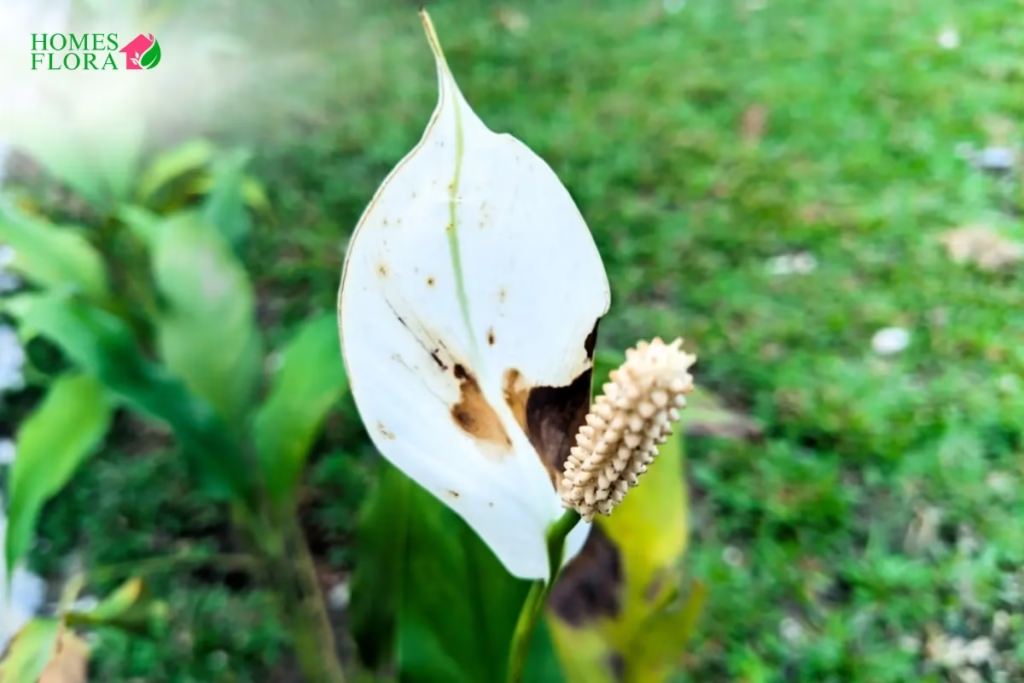
Why Is My Peace Lily Flower Turning Brown?
It’s pretty normal for Peace Lily flowers — those elegant white spathes — to fade and turn brown as they age. Typically, each bloom lasts about four to eight weeks before drying out. But if you notice your flowers browning much sooner, your plant might be stressed. Common causes include underwatering, drafts, or sudden temperature drops that dry out the blooms faster than they should.
The good news is, this is easy to fix. Make sure your Peace Lily is getting steady, indirect light and that the soil stays lightly moist — never bone dry and never soggy. Keep it away from cold drafts or hot air vents. Once a flower is fully brown, trim it off at the base to tidy the plant and redirect energy to new healthy growth.
Why Does My Peace Lily Flower Turn Green?
Almost all Types of Peace Lily flower naturally shifts from bright white to green as it matures — it’s just the spathe aging. However, if your blooms are turning green quickly, it’s usually a sign that they’re not getting enough light. Peace Lilies can tolerate lower light, but too little can cause early color change and fewer blooms overall.
To help your flowers stay white longer, move your Peace Lily to a spot with bright, indirect sunlight — like near a north or east-facing window. Avoid harsh midday sun that can scorch leaves and blooms. With just the right light, your plant will reward you with more crisp white flowers that keep their color longer.
Why Is My Peace Lily Flower Turning Black?
Blackening flowers on a Peace Lily are rare but usually signal root trouble — most often from overwatering. When roots sit in soggy soil for too long, they can rot, and the stress shows up in the flowers first. Fungal infections or extremely cold drafts can also cause flowers or leaf tips to blacken.
To fix this, check the soil — it should be damp but never soaked. Let the top inch dry out between waterings. If you suspect root rot, gently remove the plant from its pot and inspect the roots: healthy ones are firm and white, while mushy brown roots should be trimmed off. Repot in fresh, well-draining soil and remove any black flowers to encourage healthy regrowth.
Brown Spots on Peace Lily Flowers
Brown spots on those pretty white spathes often come from too much direct sunlight scorching the delicate blooms. Another common cause is dry indoor air — especially in winter when heaters run nonstop. Peace Lilies naturally thrive in the warm, humid shade of tropical forests, so harsh rays and dry rooms can stress them out fast.
To prevent spots, keep your Peace Lily out of direct sun — filtered, bright light is best. Boost humidity by misting the leaves every few days or placing the pot on a tray filled with pebbles and water. This extra moisture helps keep the blooms smooth and spotless, and the whole plant looking lush.
where to cut dead peace lily flower
Yes! Removing spent blooms keeps the plant tidy and signals it to focus on new growth. Use clean scissors or shears and cut the stem as low as you can. A neat Peace Lily is a happy one.
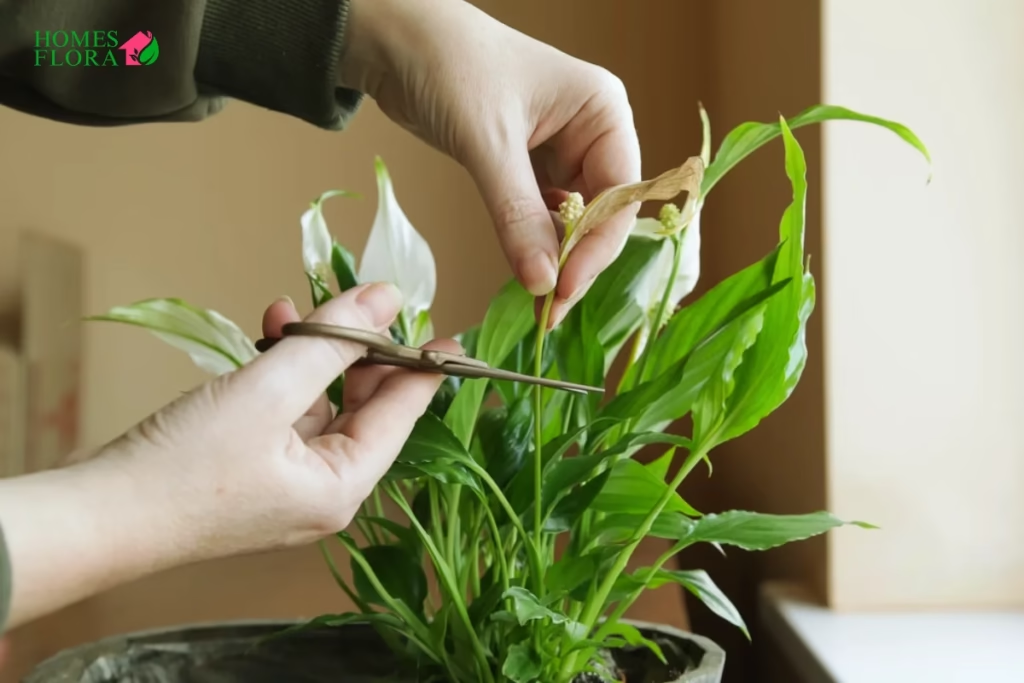
Final Thoughts
Understanding the Peace Lily flowering stages makes caring for this elegant houseplant way less mysterious. With the right balance of light, warmth, moisture, and a little feeding, you’ll unlock more blooms and healthier leaves year-round.
Got a Peace Lily story or blooming tip? Share it below — I’d love to hear how yours is doing! And if you found this guide helpful, pass it on to a fellow plant lover or subscribe for more houseplant wisdom. Happy growing!
Frequently Asked Questions (FAQs)
How often do Peace Lilies flower?
Usually once or twice a year, mainly in spring — sometimes again in fall if you’re giving them extra good care. A happy plant might surprise you more than you’d expect!
How long do the flowers last?
Each elegant white bloom lasts around 4–8 weeks before fading. Enjoy them while they’re fresh — they’re worth the wait!
Should I cut off green or brown flowers?
Absolutely — snip faded or browning blooms to keep your Peace Lily tidy and healthy. It helps the plant focus energy on new growth.
How can I help my lilies bloom faster?
Keep lilies warm and slightly humid to encourage faster blooms. Gently loosening tight petals can help too — just take care not to bruise the bud. A little patience and the right spot can make all the difference.
How often do Peace Lilies bloom?
Absolutely — snip faded or browning blooms to keep your Peace Lily tidy and healthy. It helps the plant focus energy on new growth.
How many times does a garden lily bloom in a year?
Most garden lilies flower once yearly in summer. They need a cool rest period to bloom well again. Choose different lily varieties for blooms that span the season.
How often should you water a Peace Lily?
Water once a week or when the leaves droop slightly. Mist the leaves in summer to keep them fresh. Always check the soil — slightly damp is perfect, soggy is not.
Why won’t my Peace Lily flower?
Too little light often stops flowering. Move it to bright, indirect light and feed it during spring and summer for the best chance at blooms. Good light and gentle feeding wake up sleepy plants.

